Write a survey introduction that entices people to start—and complete—your survey
Make a great first impression with a survey introduction that introduces who you are, what you want, and why people should complete your survey. We’ve got four tips to help you write a survey introduction that does all that and boosts completion rates.
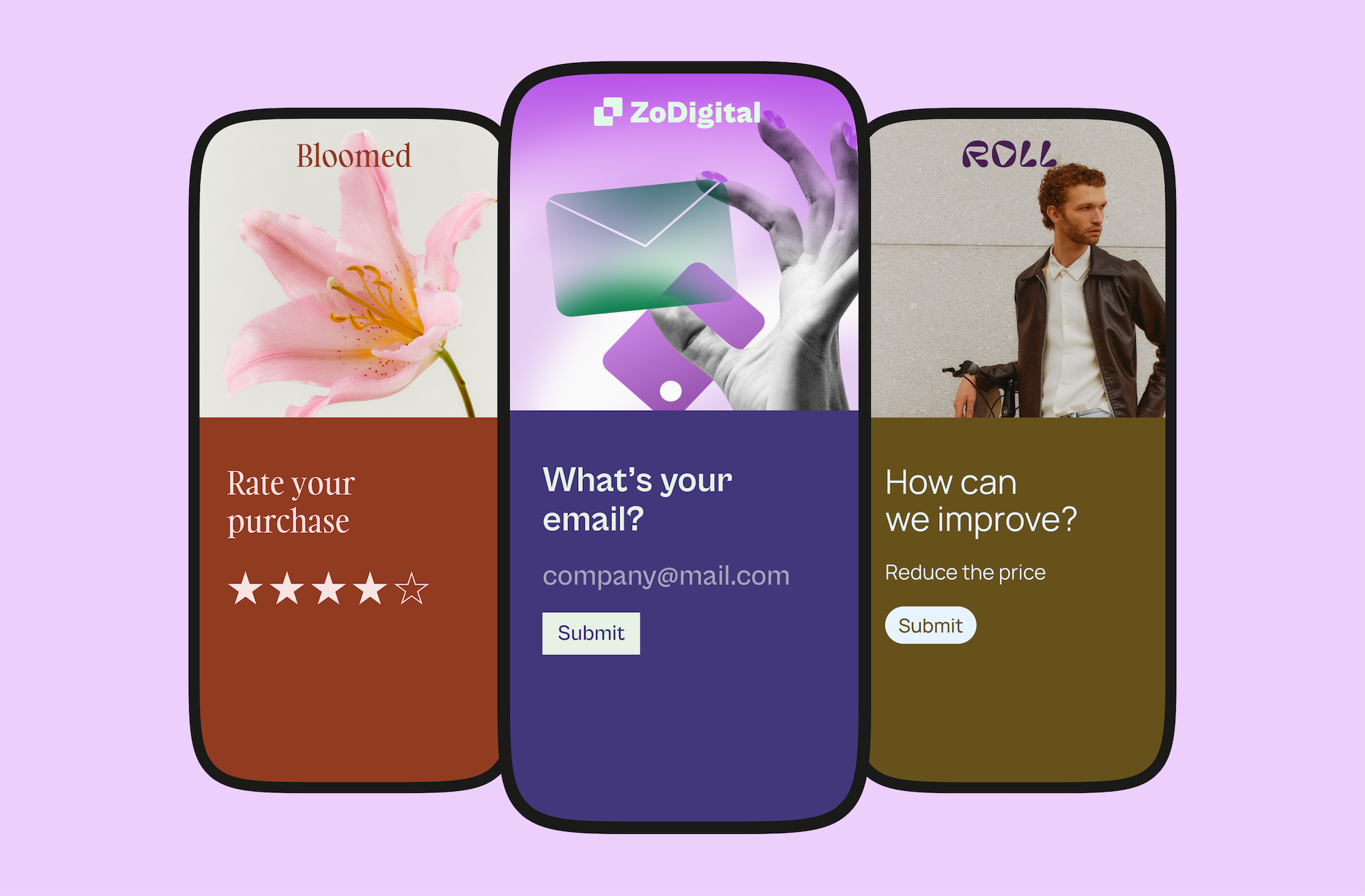
You’ve written thoughtful questions, designed a beautiful survey, and you’ve embedded it on your website or shared it in a newsletter. And then… crickets. Not a single response. Before you scrap the survey and rethink what went wrong, take a look at your survey introduction.
You only get one chance to make a good first impression—and with your survey, that’s the introduction. Does it inspire action? Highlight the goal? Let them know how long it'll take to complete the survey?
There’s an art to writing a survey introduction that entices your audience to start and complete the survey. And we’re walking you through how to write a survey introduction that skyrockets response rates (plus survey templates to help you get started).
Essential elements to include in your survey introduction
Before we get into how to write a better survey introduction, let’s take a look at some of the core elements, like how long it'll take to complete and introducing the survey taker to your brand.
Tell survey takers who you are
Imagine someone walking up to you on the street and asking you a bunch of random questions before introducing themselves or giving any context. Weird, right? The same goes for your survey.
Introduce yourself—who are you, what does your organization do? It's about building a connection (and maybe even some brand awareness, too) that fosters trust and encourages survey takers to fill out your survey. Without it, you can expect a lot of opens and very few completions.
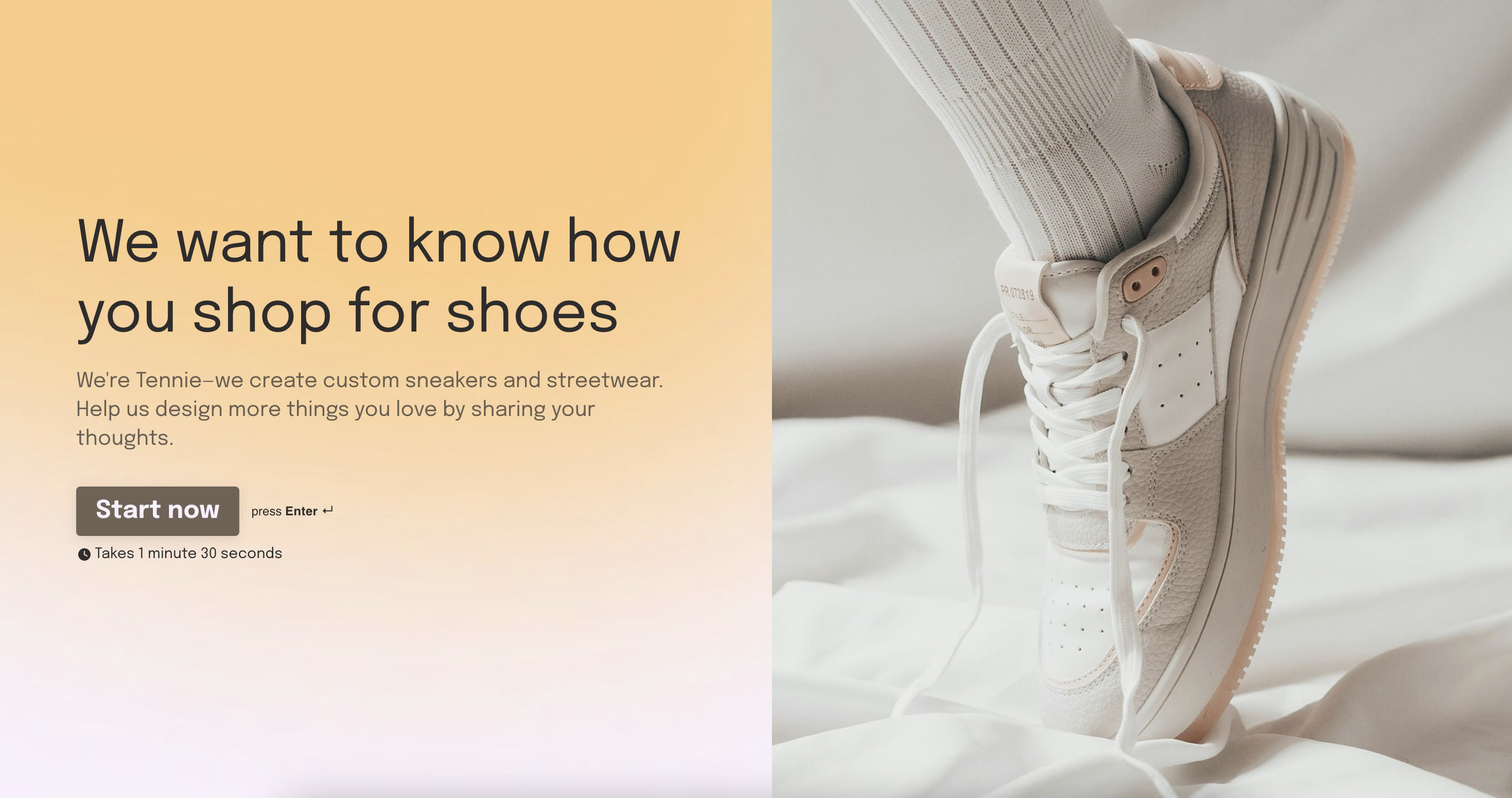
But make sure you don't drag on and on about your company and how incredible you are. The more you make it about you, the more biased the survey feels. So, when you're writing your survey introduction, let people know where the survey's coming from and give a quick explanation of who you are.
Pro tip: Add the link to your website to the end screen so people can get to know your brand if they're interested in learning more about you.
Share the goal of the survey
Why are you asking people to take time out of their day to fill out your survey? Your survey introduction should clearly explain why you're sending the survey and what you hope to gain from the insights.
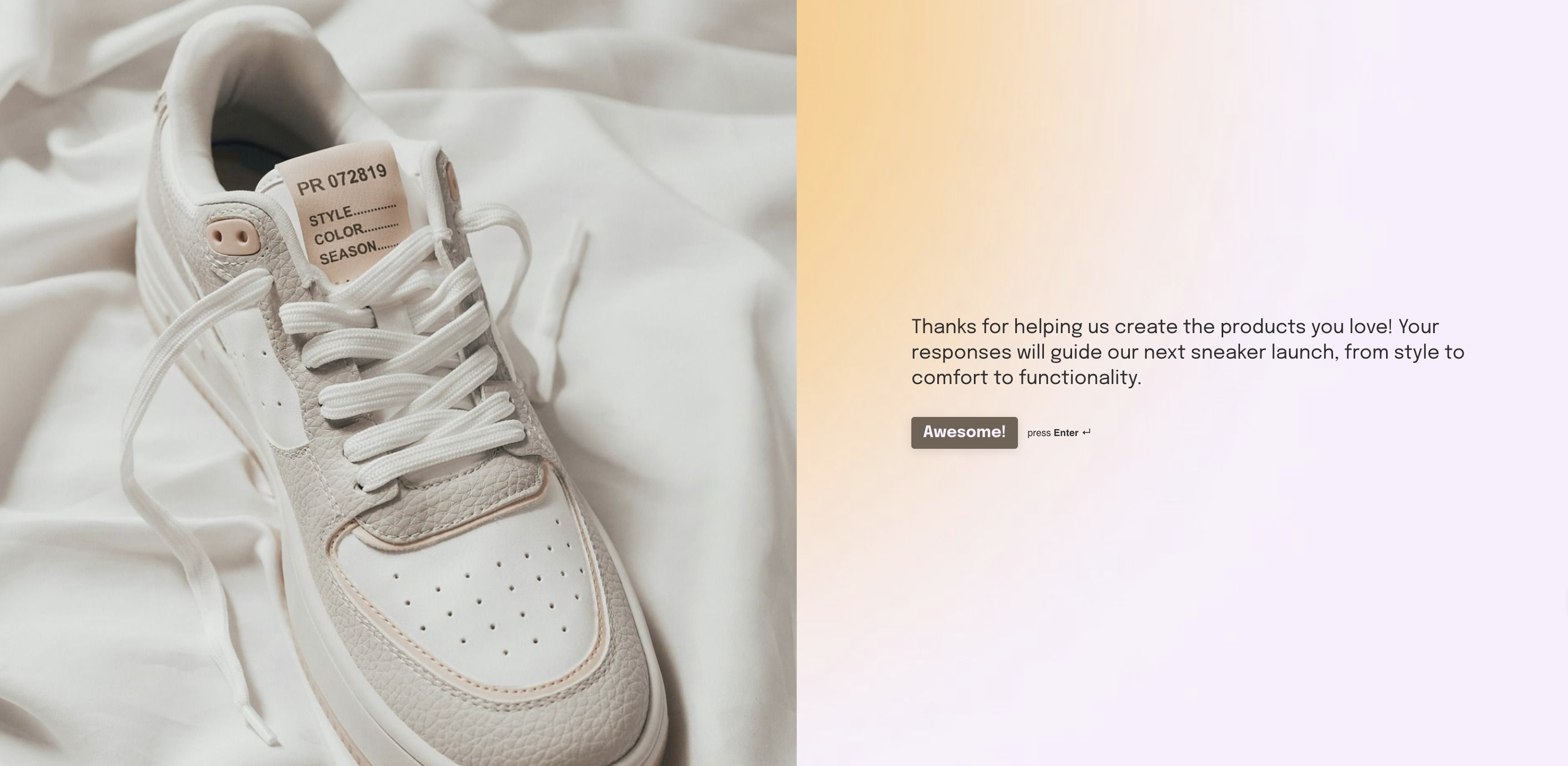
If you're vague about your objectives or skip them completely, the people you're asking to fill out your survey will find it hard to trust you. Be as transparent as possible to build that trust and bring in more responses.
Pro tip: Keep it short and to the point. If you need more room to explain why you're conducting a survey, consider explaining the why in more detail on the landing page where your survey lives or in the email you send with it.
Tell your audience how long it’ll take from start to finish
People are busy—and, ultimately, they're helping you out by completing your survey. Show you respect their time and appreciate their commitment by estimating how long it'll take to complete the survey.
See how the example below uses the survey introduction to let people know it'll only take a minute and a half to complete? That's what you're looking for.
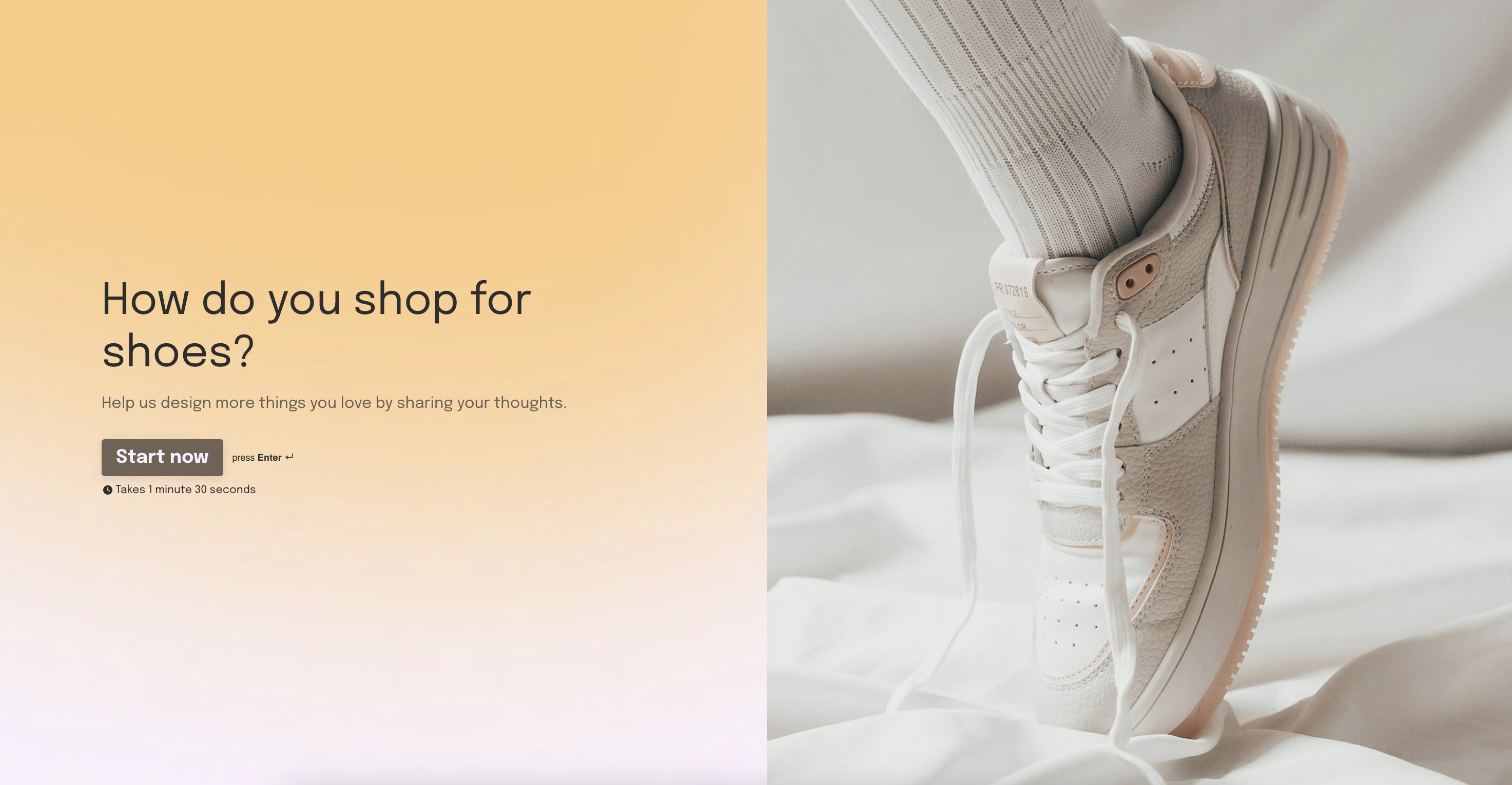
While you should include the time estimate in your survey introduction, you can also let survey takers know how they're progressing throughout the survey. Updates like, "You're halfway there," or "Only a few more questions" can encourage your audience to keep going.
Pro tip: Turn on the progress bar in Typeform to show survey takers how much of the survey they’ve completed.
Be clear about privacy and anonymity
KPMG found that 86% of the US population says data privacy is a growing concern. Between breaches and companies not being transparent about how they're using data, people—now more than ever—want reassurances about how you'll use their data.
Be honest and clear about your data privacy policy and how you intend to use customer data. Will their responses be anonymous? If so, clearly state it—you'll probably get more honest answers if your audience knows their answers will be confidential and anonymous.
But if you can't promise anonymity, let survey takers know. You want to be honest and fair. One of the best ways to do this is to link to your privacy policy so you can keep it short and short—your survey introduction shouldn't read like a novel.
Give a very brief outline of the policy in the survey introduction and give people the chance to learn more if they're curious.
Provide clear instructions
What do you want your audience to do with your survey or questionnaire? While this is more important for individual questions, you do want to be clear with survey takers about what you expect of them.
A single sentence in the survey introduction like, "Answer a few questions and then click 'Submit' to share your answers with us!" provides clarity and makes sure they don't neglect the most important part of the survey—submitting it.
If you're asking them to rate your product or use a scale, clarify what each end of the spectrum means. Let's say you want to know how tasty your customers think your cakes are using a scale of 1-10. Is "1" very tasty because it's number one? Or is it 10 because they're rating it 10/10? They don't know.
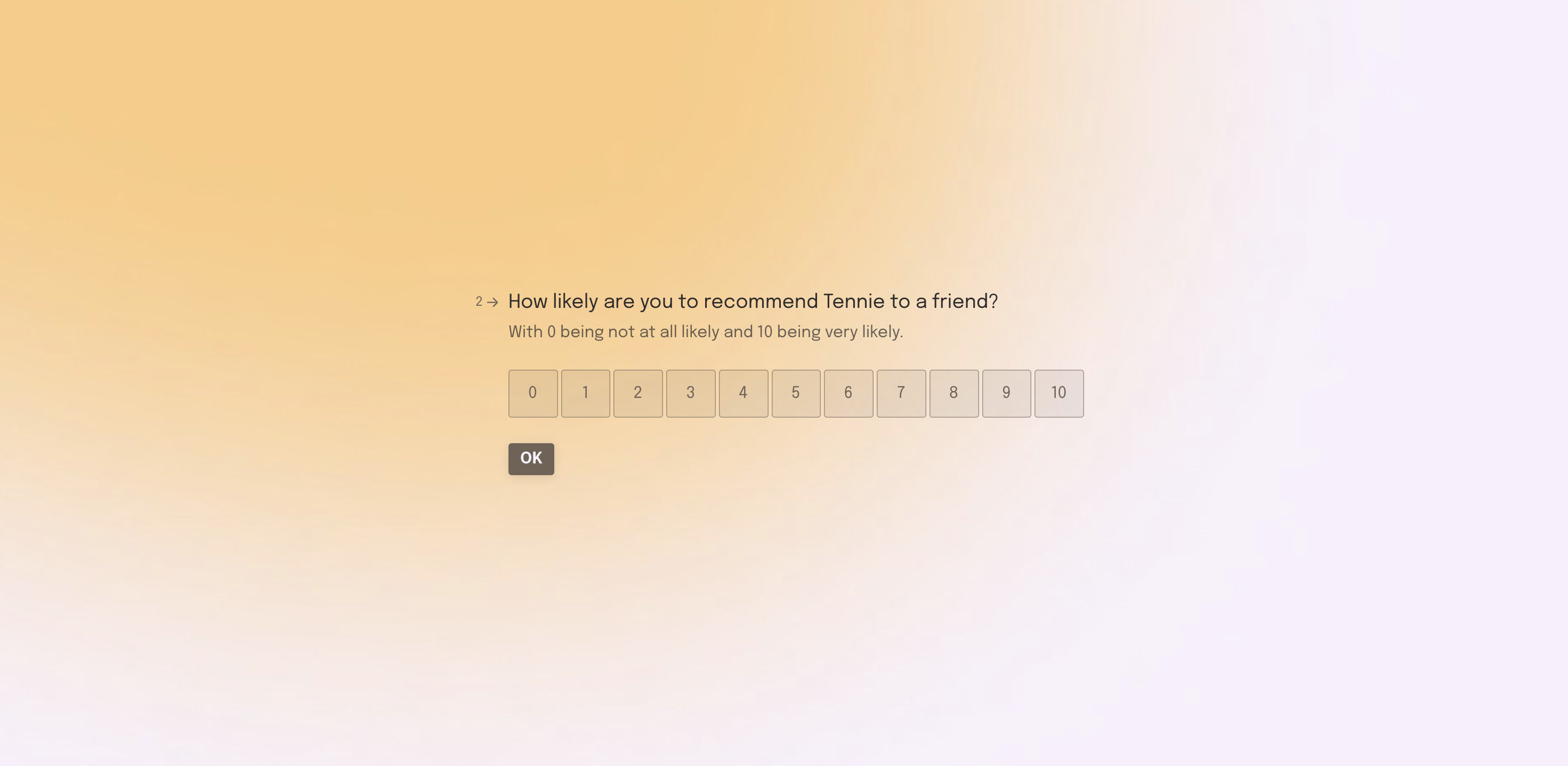
Write better survey introductions with these simple tips
Once you've got the basics down, think about how you can elevate your survey and stand out from the crowd. It's about more than just details and instructions.
Your survey introduction is the first contact you have with the people completing your survey, so you've got to start things off on the right foot. We've rounded up four tips to help you do just that.
Tip 1: Keep it human
Just because your survey is online doesn't mean you're not talking to real people. Behind every response is a human being—treat them that way. Use conversational language and avoid:
- Jargon
- A formal tone
- Academic or technical language that confuses people
Imagine opening a survey, and the first thing you see is a boring and dry survey introduction. It reads:
"Hello. Our company is looking for 100 people to participate in a market research study on..."
It makes the survey feel like it's going to be long, serious, and formal. No thanks! Humanize your survey introduction by talking to survey takers the same way you'd talk to them in person: friendly, human, and simple. Like this:
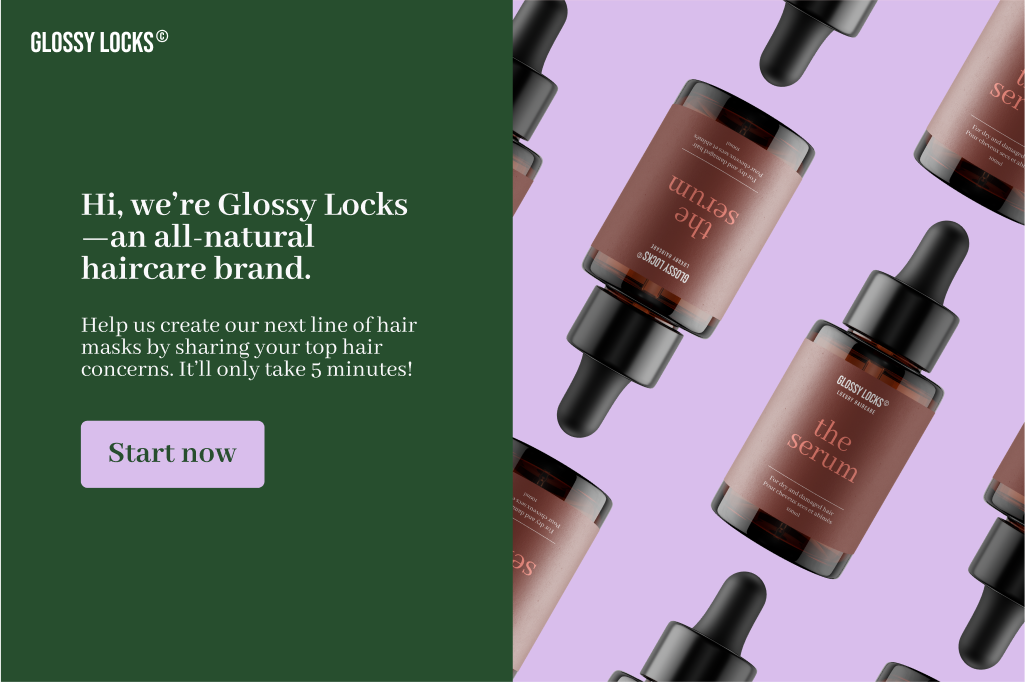
Tip 2: Be gracious
Data is invaluable. It helps you personalize marketing, understand your customers, improve the customer experience, and more. So when people willingly complete your survey, show some gratitude.
Thank survey takers for helping you achieve whatever the goal of the survey is. Plus, when people feel like their answers are valued, they're far more likely to give genuine and well-thought-out responses.
Tip 3: Write your survey introduction last
A stellar survey introduction provides a quick summary of what's to come. Until you've built your survey, you don't fully know what questions you'll include or what a survey taker can expect. So, write your survey introduction last.
Once you've gone through the process of planning and designing your survey, you’ll have a deep understanding of the content. And your survey will most likely be somewhat finalized. If you write your introduction at the beginning, you'll likely have to make quite a few edits as the survey comes together.
Tip 4: Emphasize the importance
Some people will complete your survey out of the goodness of their hearts. The rest want to know why you want them to answer your questions. The survey introduction is the perfect place to tell your audience:
- The point of the study
- Why they should care
- What you'll do with their responses
The best way to do this? Explain how previous surveys have made an impact in the past. Attention spans are short and there are a million and one distractions on the internet—explain why your survey is worth their attention (and make it compelling).
You want to show that your survey isn’t meaningless research for some faceless organization, but that it will have a real impact. Think of it as incentivizing people to share their thoughts (with the incentive being change or something else positive).
Survey examples to snag inspiration from
Ready to write your survey introduction but need a little inspo first? We've rounded up a few examples to help you get started.
Customer feedback survey introduction
Someone just bought a pair of custom shoes from you—yay! After a week or so, you send your customer feedback survey to see what they love about their new kicks and where you can improve.
They just became a customer, so you obviously want to be gracious, but here are a few other things this survey introduction does right:
- It includes the brand name
- It includes a clear time estimate
- It lets the survey taker know their responses are anonymous
- It states the why
- It has a clear call to action, "Give feedback"
- It's conversational and warm
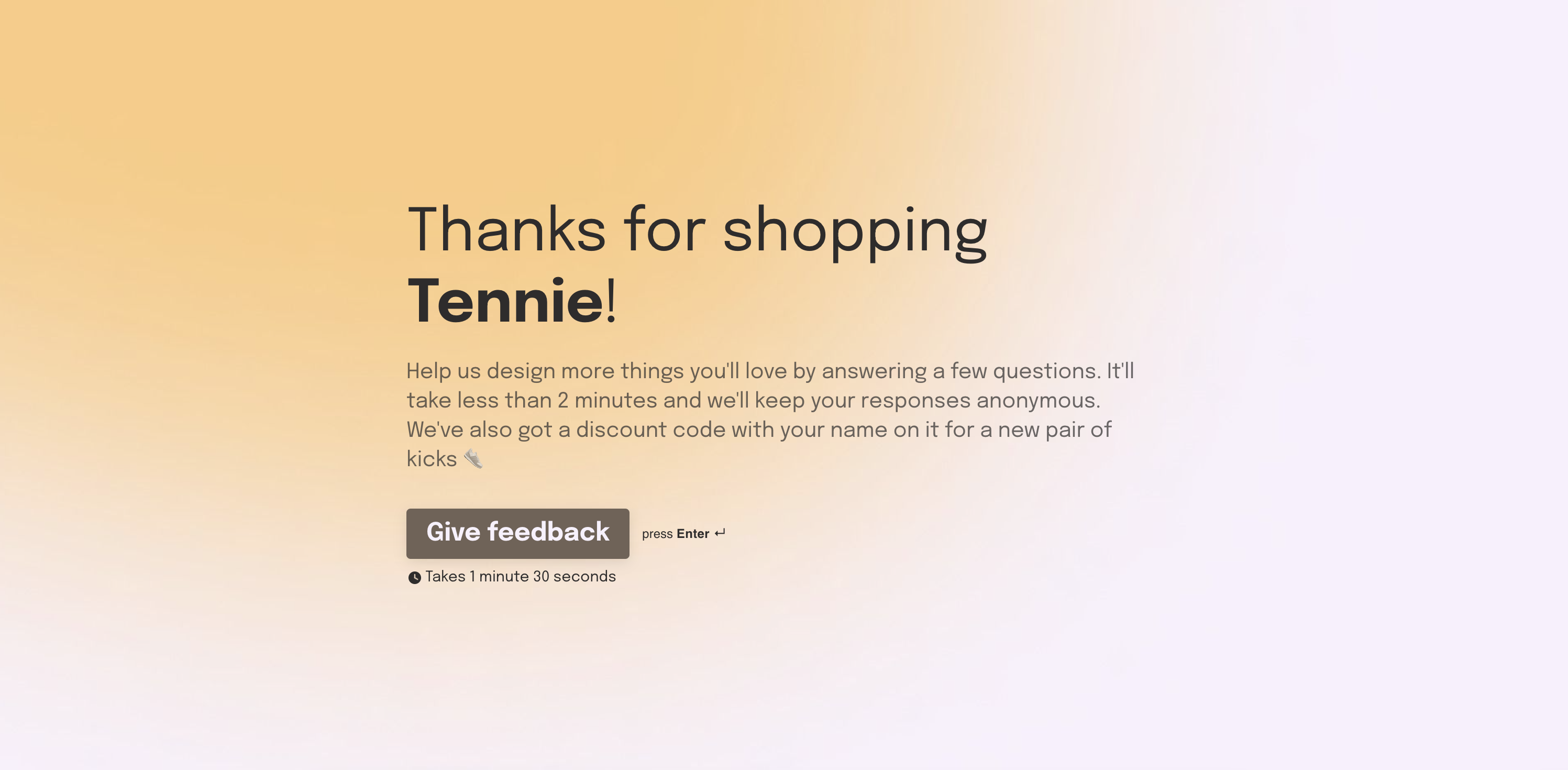
This survey introduction gives you every reason to spare a few minutes to complete it.
Market research survey introduction
While market research and customer feedback are certainly different, the survey introduction should still follow the same rules—introduce yourself, the goal, and so on. Take a look at fictional brand Datanna.
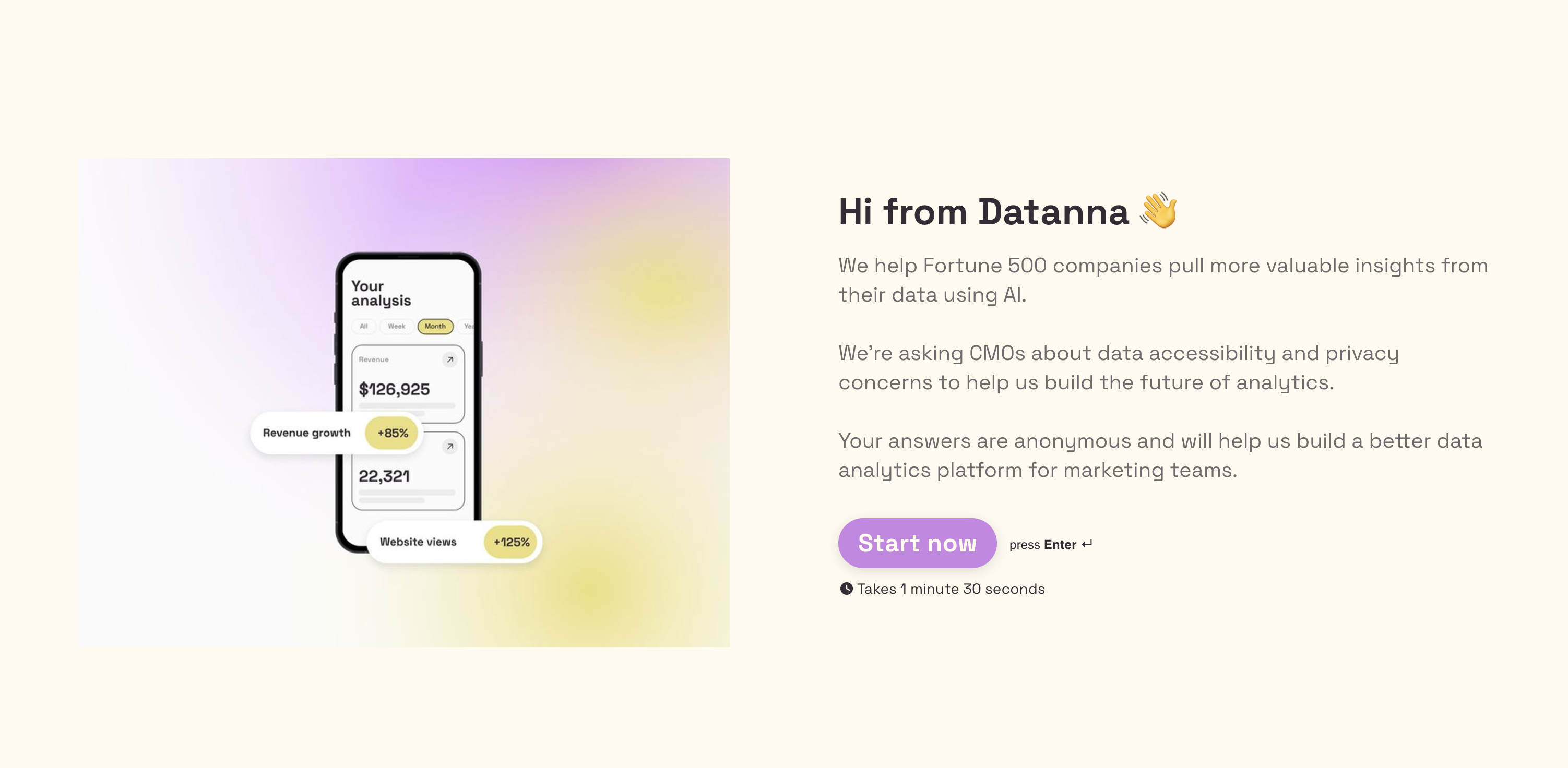
See how Datanna gives a brief explanation of the brand and shares how they'll use the survey takers' data? This gives the audience an idea of who they're sharing data with and how their data will be used.
The survey also has a time estimate and an obvious action button. It tells participants that they’ll remain anonymous, but—more importantly—it lets them know how you’ll use their data.
Anyone who decides to partake in the survey has a clear idea of who the company is and what they do, that they’ll be anonymous, and what Datanna will do with their data.
Survey templates
Whether you're asking for feedback, conducting market research, or a demographic survey, we've got over 140 survey templates to help you get started. Now that you know how to write a survey introduction, go build your survey (with Typeform).



